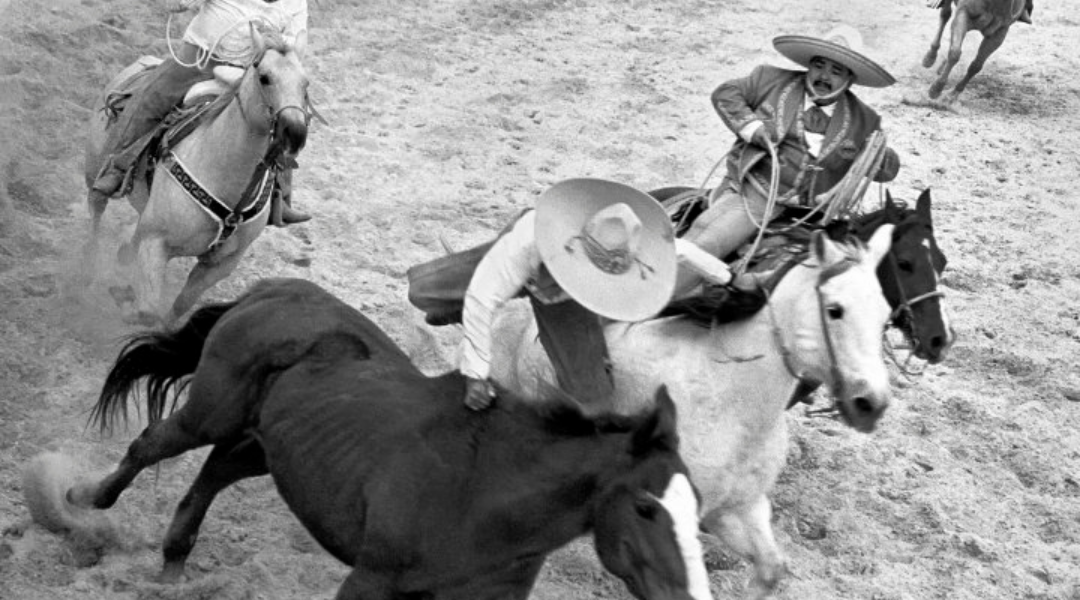‘Vivitos y Coleando’: The Cultural Politics of the Paisa Periphery, by Prof. Adrián Félix
Prof. Adrián Félix published a review of Charros: How Mexican Cowboys are Remapping Race and American Identity, by Laura Barraclough. Excerpt below:
Octavio Paz once wrote about the zacatecano poet Ramón López Velarde that “irony is his rein and the adjective his spur.” Not so for Barraclough, who is more of a straight shooter; her writing is neither flowery nor poetic, careful not to over-stretch charro metaphors in her prose. However, my main critique of this book is not in its form but rather in its method. True to her formation as a geographer, Barraclough opens the conclusion by stating: “Hover over virtually any city in the U.S. West using the satellite view of a web mapping service, and you will almost certainly spot the distinctive keyhole shape of at least one lienzo charro” (196). Her argument about “place-making”, “vernacular spaces” and “ranchero landscapes” on the “metropolitan fringe” is an important one, as “lienzos offer an important space for cultural affirmation and transnational collectivity” (196) and an “invocation of a shared rural Mexican ranching past left behind” (197). As is the central argument that positions charros as the “original cowboys”: “Asserting the historic presence of ethnic Mexican ranchers and vaqueros as the ‘original cowboys’ in the region that became the U.S. Southwest, they have transformed core narratives of American identity centered on the cowboy, ranching, and the rodeo” (200). Yet for all her focus on “scalar dynamics” and “scaling up”, it would behoove Barraclough to descend from the bird’s eye view, and the historic “long view”, and scale down. It is the task of the ethnographer to, as charros put it, “entrarle al ruedo” (“enter the rodeo ring”), with all of the political ethics that implies, plunging into the depths of the paisano periphery. This, however, would require oral histories and deep ethnography, something Barraclough entirely avoids. Those who are up to the task will find charros not as long-gone historical figures but as living, breathing, flesh-and-bone denizens of the paisano periphery, with all of our contradictions, as the charro adage goes, vivitos y coleando. Alive and bull-tailing.
Read the full review here. Photo courtesy of Al Rendon.
Faculty News
